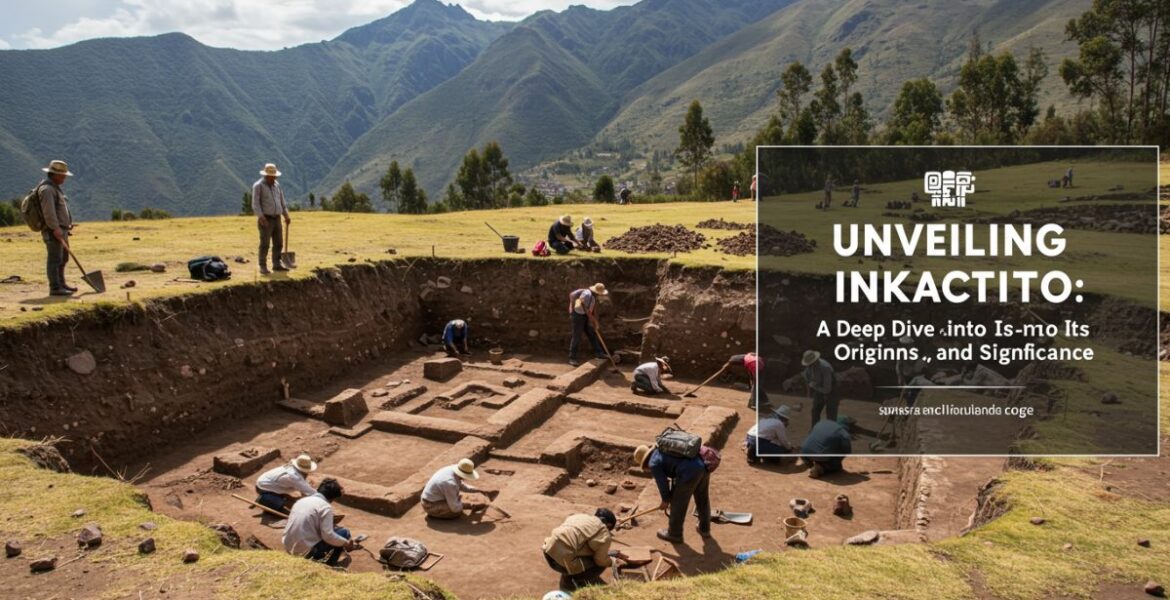Unveiling inkacito: A Deep Dive into Its Origins and Significance

Inkacito is more than just a term; it embodies a rich tapestry of culture, history, and identity. This fascinating concept has been woven into the fabric of societies for centuries, yet many are only beginning to uncover its depths. As we peel back layers of tradition and meaning, we invite you on a journey through time—one that reveals not only where inkacito comes from but also why it remains significant in our modern world.
In this exploration, we’ll delve into its origins rooted in ancient customs and the roles it plays today. From traditional practices to contemporary uses, inkacito offers insights that resonate with both history enthusiasts and those seeking new ways to connect with cultural heritage. Join us as we navigate the intricate landscape of inkacito—a term steeped in significance waiting to be rediscovered.
The Origins of Inkacito: History and Cultural Significance
Inkacito has deep roots in the rich tapestry of Andean culture. This traditional art form emerged from ancient civilizations, weaving together threads of history and identity.
Historically, it was used by the Inca people to tell stories. Each design carried meaning, reflecting beliefs and social structures. These intricate patterns often represented nature, spirituality, and community life.
The significance of inkacito extends beyond mere aesthetics. It served as a medium for preserving traditions through generations. Elders passed down techniques to younger artists, ensuring continuity in cultural expression.
In many indigenous communities today, inkacito remains a symbol of heritage. It fosters pride and serves as a reminder of resilience against colonial challenges. The art form is not just decorative; it’s a celebration of ancestry and a connection to the past that shapes present identities.
The Role of Inkacito in Modern Society
Inkacito plays a fascinating role in today’s world, bridging tradition and modernity. Its vibrant colors and intricate designs are not just artistic expressions but also powerful symbols of cultural identity.
In urban settings, inkacito has become a popular element in fashion and home decor. People adorn their clothing with its unique patterns or use it to personalize living spaces. This trend celebrates heritage while appealing to contemporary aesthetics.
Social media platforms have further amplified the reach of inkacito. Creatives share artwork inspired by this ancient practice, sparking interest among diverse audiences. The blending of old techniques with new technology showcases its adaptability.
Moreover, inkacito fosters community engagement. Workshops and events centered around this art form bring people together, encouraging dialogue about its significance and history. Such initiatives help preserve traditions while educating younger generations about their roots.
Traditional Uses and Practices of Inkacito
Inkacito holds a deeply rooted place in various cultures, particularly among indigenous communities. Traditionally, it has served as more than just an artistic expression; it’s been a medium for storytelling and preserving history.
Ceremonially, inkacito is used during rituals and festivals. The intricate designs often tell tales of ancestors or nature’s beauty. Each stroke carries meaning, connecting the present to the past.
Artisans meticulously prepare natural dyes from local plants. This process highlights respect for nature and sustainable practices passed down through generations.
Additionally, inkacito plays a role in healing traditions. It is believed that specific patterns can promote mental clarity and emotional balance when adorned on the body.
Through these traditional uses, inkacito transcends mere aesthetics—it embodies identity, spirituality, and community connection.
The Controversy Surrounding Inkacito: Misuse and Appropriation
Inkacito, while celebrated for its cultural richness, also faces scrutiny. The increasing commercialization of this traditional practice raises eyebrows among communities that hold it dear.
Many argue that the beauty of inkacito is being diluted. When artists and brands adopt its aesthetic without understanding or respecting its roots, they risk trivializing a sacred tradition. This appropriation can lead to a disconnect between the original meaning and contemporary interpretations.
Critics highlight instances where inkacito has been exploited for profit. Often, those who benefit are not part of the culture from which it emerged. Such actions spark debates about authenticity and respect in art forms.
In response, advocates urge for greater awareness and education around inkacito’s significance. They call on consumers to be mindful when engaging with cultural practices so as not to perpetuate harm or misunderstanding in their exploration of this vibrant expression.
How to Incorporate Inkacito into Your Life
Incorporating inkacito into your life can be a rewarding experience. Start by exploring its cultural roots. Engage with local communities or online forums to learn from those who cherish it.
Consider attending workshops that focus on traditional practices. These hands-on experiences deepen your appreciation and understanding of inkacito’s significance.
You might also look for art projects where you can use inkacito as a medium. This creative outlet allows you to express personal interpretations while honoring its heritage.
In daily routines, integrate elements inspired by the principles of inkacito. This could mean adopting mindfulness practices or even creating rituals that celebrate community connections.
Share what you’ve learned with friends and family. By spreading awareness about this rich tradition, you contribute to keeping it alive in modern society.
Conclusion:
The journey through the world of inkacito reveals a rich tapestry woven from history, culture, and modern relevance. Understanding its origins sheds light on how deeply embedded it is in various traditions. This cultural artifact not only serves as a reminder of past practices but also holds significant value in contemporary society.
As we navigate the complexities surrounding inkacito, it’s essential to recognize both its traditional uses and the ongoing debates about appropriation. Engaging with inkacito thoughtfully can foster appreciation rather than exploitation.
You may also like


Exploring mebalovo: A Hidden Gem in the Heart of Nature

Leave a Reply